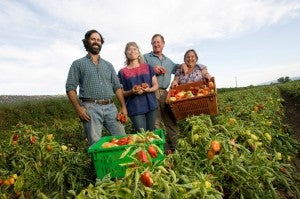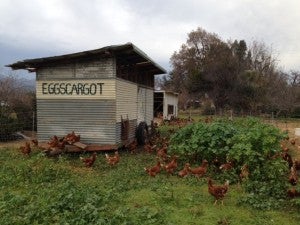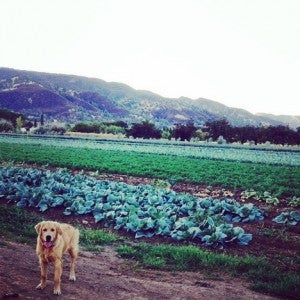It’s not always easy to incentivize private landowners to voluntarily implement water efficiency and conservation measures, particularly when there’s a drought. When drought hits, farmers desperately need water to grow thirsty crops and remain profitable. In the near term, it’s a lot easier, as “60 Minutes” recently reported, to keep drilling deeper and deeper to access quickly dwindling groundwater – at any cost.
As the “60 Minutes” story notes, groundwater is like a savings account that should primarily be used in times of need to supplement surface water supplies. With the most severe drought ever on record and surface water supplies at an all-time low, farmers all across California are pumping groundwater in record amounts – putting the state in serious risk of widespread groundwater overdraft.
That’s why the case of Full Belly Farm, a 400-acre, 30-year old certified organic farm located in Northern California – and recent winner of the prestigious Leopold Conservation Award – is especially impressive.
Halting depletion
The growers at Full Belly Farm are maximizing soil health and making sure nutrients are replenished through compost application – which allows the soil to retain more water and have better seepage. This in turn leads to better groundwater replenishment and prevention of aquifer depletion.
Maximizing soil health
While the average soil organic matter in California’s Central Valley is 0.7 percent, Full Belly’s soils have an average of 3 percent soil organic matter. This can be attributed to rotating crops, using cover crops during the off season, and applying compost, all of which contribute to healthy soils.
Cover crops not only can help increase famers’ yield, but they also reduce soil erosion, increase organic matter in the soil, and prevent nutrient loss by holding on to nitrogen and phosphorous that might otherwise run off into our waterways.
During the growing season, water efficiency also plays a key role – 90 percent of the farm’s crops are watered using drip irrigation, and many use buried drip systems that lose less water to evaporation than traditional systems.
Voluntary measures
But that’s not the only way Full Belly is a conservation leader. Here’s what else they’re doing:
- Planting habitat to benefit local wildlife and insects, which help pollinate crops
- Selling produce within 120 miles of the farm to limit GHG emissions caused by food transport
- Hosting an annual festival to create awareness about sustainable food production and ethical farm labor
- Implementing a seasonal rotation of crops, herbs and grains to maximize crop diversity
As the growers at Full Belly note, the diversity of crops grown on the farm’s more than 50 independently managed fields contribute to the farm’s economic and ecological resilience in the face of climate change.
Leading the way
Full Belly Farm is demonstrating that voluntary conservation by private landowners is one of the most effective and efficient ways of stewarding and protecting our state’s land, water and wildlife.
As the drought continues in California, other private landowners – big and small – can and should consider implementing similar water efficiency and soil health measures to ensure better reliability of our precious water resources.












